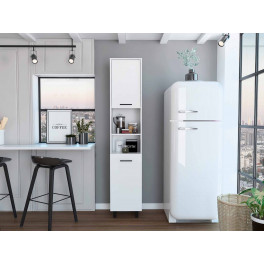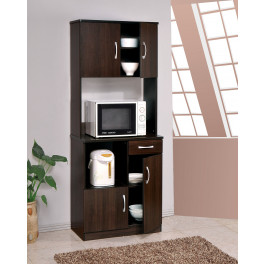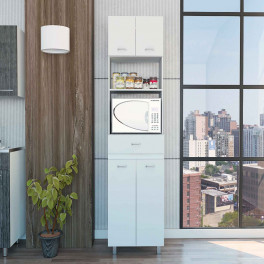The whole point to purchasing and installing a countertop is not only for how they appear but also for what they’re used for. Quartz is an exceptional material and one of the primary choices that homeowners will make in the array of natural stones. The average range you should expect to spend for a marble countertop is about $1500 to $4500. You’ll probably spend around $500 for the lower end of this estimate, however, the higher end will probably be estimated at about $12000.
| Average Range | $1500-$4500 |
| Low End | $500 |
| High End | $12000 |
Since quartz has so many different kinds of colors, styles, and designs associated with it, you’re going to have to figure out the estimates through the choices you make as the homeowner. On average, you’re likely to spend about $40 to $100 per square foot for the quartz itself. However, the labor cost will probably cost you about $35 to $200 per square foot.
Table of Contents
- Quartz Countertop Costs By Grade
- Quartz Countertop Costs By Type
- Quartz Countertop Costs By Finish
- Quartz Countertop Labor Costs
- Fabrication Costs
- Fabrication Process
- Quartz Countertop Edge Treatments
- Corner Treatments
- Additional Cutouts
- Delivery Costs
- Countertop Removal Services & Disposals
- Quartz Countertop Cost By Color
- Cost Difference Between Kitchen & Bathroom
- Plumbing Rearrangement Costs
- Quartz Countertop Replacement Costs
- Finding Multiple Estimates Through House Tipster
Quartz Countertop Costs By Grade
Typically, there are about three different grades to categorize quartz slabs. Although there are different ways to interpret these three grades, they are nonetheless the same qualities to choose from. The low-grade quartz can be referred to as the good or surplus quality, there are few that will call it the builder’s grade quality. The mid-grade quartz can be referred to as the better or standard quality, some fabricators will refer to it as the premium grade quality. The high-grade quartz is sometimes referred to as the best or the first choice quality.
You’ll see that the first of these grades will likely suggest how inexpensive it actually would be. The low-quality grade will cost about $30 to $65 per square foot. Costing about $65 to $80 per square foot, homeowners will have to pay a little extra to find mid-grade quartz. The most expensive option is the high-grade or what some would consider the last choice will cost about $80 all the way up to $200 per square foot.
Low-Grade/Good
Ranging between $30 and $65 per square foot, the low-grade or the good quality of quartz will be thinner than usual. It’ll measure two centimeters rather than the common three centimeters. Homeowners might find this an adequate material, however, there are those that may find it rather plain. There are somewhat ordinary hues or trends. Veins and some discoloration might be visible but it won’t be transparent.
Mid-Grade/Better
This quality and grade of quartz countertops will probably cost about $65 to $80 per square foot. With the mid-grade or the better quality of quartz, you’ll see the option of choosing a variety of colors and patterns. You may even be able to purchase quartz that somewhat resembles the qualities of granite. Some homeowners could possibly even find quartz that resembles marble or concrete. This will be the most frequent kind of quartz that homeowners will be able to purchase and install.
High-Grade/Best
Other than being the most expensive kind of quartz, the designer or high-end quartz will have bright and bold colors available with specialized veining. Estimated to cost about $80 to $200 per square foot, the designer quartz will typically measure at about four centimeters or greater in thickness. The variety won’t have any visible veining and will include an assortment of rich colors.
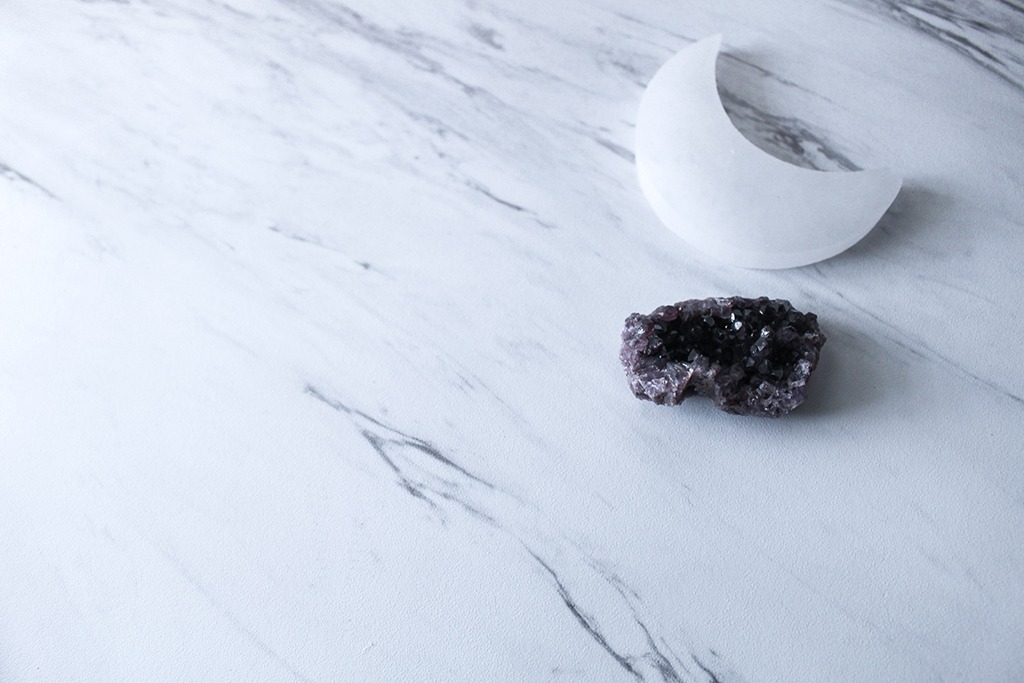
Quartz Countertop Costs By Type
There are two types of quartz countertops. Homeowners can either choose to install the tile type of quartz or the slab type of quartz. Both will have very different cost ranges. The tile type will be estimated between $20 to $30 per square foot, while the slab type will probably be estimated at about $60 to $80 per square foot.
-
Tile:
A rarer quartz option is the tile countertop which will cost the homeowner about $20 to $30 per square foot. Typically, you’ll see this option for other materials, such as granite, marble, or concrete. Most homeowners will try to find this type of countertop to substitute Terrazzo since they both have kindred appeal and appearances. Essentially, this will be a blend of quartz stone, pigments, and resins. Most often, you’ll find the tiles to be about 24 inches. Specialized methods need to be involved with finishing the edges of these tiles since you won’t find any finished edges on these pieces. Typically, the fabricator will use a wet saw but using a diamond blade with a diamond bullnose tool to shape out the tiles. However, in these circumstances, you should expect to spend at a larger rate.
-
Slab:
Homeowners should expect to spend about $60 to $80 per square foot to install the quartz slab. Since they’re commonly estimated as installations instead of materials, it is the manufacturer who will have the final say on what the price will end up being. Fabrication costs typically vary by the state or area you reside in. And a number of factors such as the quality of the quartz and the installation itself will affect the overall average cost.
Quartz Countertop Costs By Finish
You have three different options when it comes to your quartz countertops and their finishes. There is the honed finish, the polished finish, and the sueded finish. Each of these have their own qualities associated with them, but they’ll all cost around the same average price. The range will probably be between $60 to $80 per square foot.
- Honed Finish Also known as the matte finish, the honed quartz countertop will have a fully smoothed out surface. Overall, they’ll look like a flat, matte appearance. The only downside to this finish is that there is no shine or gloss to it, however, the benefit to the matte finish is how they look against smudges and streaks. Homeowners that prefer a kitchen or bathroom without any blemishes from fingerprints or wipes will want the honed finish. However, even with hygiene and cleanliness involved, the reflection of light will not assist you in detecting any crumbs or little specks on the countertop. As an alternative to soft stones and concrete, homeowners will opt into using and installing the honed finish as their quartz countertop.
- Polished Finish Also known as the traditional countertop finish, this is the kind of finish that is quite the opposite to the honed finish. This finish ensures that the quartz retains its shine and keeps its surface reflective. Typically, you’ll see that your countertop is ground down with a mild grinder which is how the surface turns into a reflective shine. If you’re desiring something that enhances the overall appearance of the spaces inside your home, this might be the surface finish for you. Homeowners that prefer spaciousness can choose the polished finish, this is especially the case if the homeowner wants a traditional look. Another advantage to the polished finish is that it does not wear down nor would you need to reapply the finish even after a long duration of time.
- Sueded Finish Similar to how marble countertops have the leathered finish, the quartz countertops have the sueded finish. Although this finish might resemble the honed finish, a sueded finish will have more depth and texture. The focus of the honed finish is in its flatness. The biggest advantage to these is how low its maintenance is. There are no specialized services required to maintain its condition and will only need a basic wiping every now and then. Keep in mind that not every quartz color is available in the sueded finish.
Quartz Countertop Labor Costs
Installations for quartz countertops will cost about $35 to $85 per hour, or about $10 to $30 per square foot. Besides the cost of the fabricators, you may need an extra set of hands to help assist you with services in actually installing the countertops into the spaces of your home.
Fabrication Costs
There are fabrication services that you may have to consider when installing a quartz countertop to your kitchen or bathroom. Besides the actual installation, homeowners will have the option of adding different cutouts, or treating the edges and corners of the countertops. On average, homeowners could spend up to about $430 to $1045 or more if they want these services to be provided along with the installation itself.
Depending on how much space the service covers, the costs can very well be higher than the presumed estimate above. Pricing for these services will ultimately depend on the size of the changes that are being made or the additional installations that might need to be completed. Homeowners should assess what kind of changes they want most since some of these options might actually be required.
Fabrication Process
Before any slab can be installed, the homeowner must choose a particular quartz that they think would look best in their home. Once the quartz type is chosen, the fabricator will inspect the slab. The reason the stone specialist needs to inspect the quartz is due to the innate characteristics that may need to be removed.
Dry seams, black spots, polyester resin fill, pits, natural directional veining, feldspar and mica conglomerates are all considered to be one-of-a-kind. However, it is entirely up to the homeowner whether these physical traits should be removed or not. Right before the templating process can be done, the fabricator will find the specificities that the homeowner wants corrected.
Essentially, the inspection of the stone works as the planning, so there are going to be marks and notes involved with which attributes should be taken out. During this process, the fabricator figures out which template and layout that the homeowner desires. This part of the process is pivotal because the template is what will ensure that your quartz retains the best version of itself.
Now that the inspection and the templating are complete, the fabricator begins actually cutting the stone with either a water jet or a bridge saw. The bridge saw is made up of a diamond segmented blade that cuts seven feet of stone per minute. This is while the water jet will use a powerful amount of pressure, utilizing water to cut the stone by a foot per minute.
The fabrication specialist that favors the bridge saw will want speed, while the fabrication specialist that favors the water jet will want precision. The added benefit with the water jet is that it can also cut circles and many other elaborate shapes.
Finally, the fabricator will figure out the dimensions and the proper measurements to cut holes for the homeowner’s sinks, cooktops, faucets, and other associated items. Keep in mind that the whole point to the countertop is to prevent the spaces in your home from being damaged. With the assistance of a computer to ensure that all the holes are concise to the plans and layouts according to the homeowner’s enumerations.
Quartz Countertop Edge Treatments
No matter which countertop material you’re opting for, you’ll see that there are various kinds of edge options available. Homeowners will depend on what they might need these edges for, and by doing so is how they can ultimately decide which profile fits their countertop. On average, you should expect to spend about $6 to $60 per linear foot.
Half Bullnose
Typically, the half bullnose edge will feature a slight curve on your countertop’s upper surface and straighten the bottom portion. This edge helps the countertop to fully display the thickness of the slab.
Eased Edge
Often it is alternatively referred to as the ‘softened square’ edge. The eased edge is most popular for laminate countertops. Homeowners should note that this is probably the simplest edge you’ll find in the market, but keep in mind that simplicity is its appeal.
Bullnose
Unlike the half bullnose, the full bullnose is more of a rounded edge than a curved edge. It’s the perfect fit for your traditional countertops and helps the slab look aesthetically slender. Since this edge is not sharp along the ends, there is a lot more ease in its uses.
Bevel Edge
This is an edge profile that features a flattened corner. The angle of the edge is about 45 degrees while the bottom corner is designed with a point. Bevel edges are common for homeowners that want to prevent or at least decrease the risk of spillage dropping on the floor.
Ogee
Both the ogee and the waterfall edges are costly due to the popularity that the edges instill. While it could be considered the most popular profile, the ogee offers an S-shape to its curve. The reason why it’s so popular is because the ogee is such a sophisticated design and is a very complex profile to finish.
Waterfall
The benefit to the waterfall edge is that it features consecutive edges that are rounded. It is the countertop that provides a sort of thick appearance that you’d want in the appeal of your kitchen. Essentially, the angle of the edge is 90 degrees, and the countertop itself is directed toward the floor. The whole purpose of its name is in the design, it looks like the countertop is pouring over an edge, like water falling off a cliff. It is considered to be the most stylish profile out of the list, which is why it is so costly.
Corner Treatments
Other than the edge treatment, some fabricators will charge you separately on corner treatments. With those cases, you’ll probably have to spend an estimate of about $50 to $150 per corner. Ask your fabricator if treating your corners is included with the price of having your edges treated.
Additional Cutouts
The service of adding cutouts for your quartz countertop will range between $20 all the way up to $280 per cutout. This range will be determined by the kind of cutout you’re trying to perform on the rest of your countertop. Most homeowners consider this service when they’re remodeling their spaces.
Delivery Costs
Once the fabrication and all the treatments have been taken care of, all you’ll have to worry about is the delivery. Typically, homeowners will have to spend about $100 to $200 to have their quartz slab delivered to their homes. If you’re having the quartz delivered to you, this estimate will probably vary from the travel time and the distance.
Countertop Removal Services & Disposals
On average, you should expect an estimate of about $300 to $450 to have your former countertop removed. Especially in the case of having your home remodeled, this service will assist you with preventing any damages or having to make repairs that could have been avoided. Contractors will come and help you with keeping the condition of your home intact.
Inquire about any additional costs that may involve the debris removal. Most cases, the professionals will perform the disposal themselves, however, there are cases where this service might be charged separately. If you’re trying to complete a kitchen remodeling project, you’re going to want to check the estimates more closely and all of the tasks associated with those costs.
This also applies to the costs involved with remodeling your bathroom as well. The amount of redoing these spaces depends on how you want them to look. Whether you’re expanding it or making adjustments, there are factors that will either increase or decrease the price of making these improvements.
Quartz Countertop Cost By Color
Although the color of your quartz will not affect your overall costs in installing your quartz, it is fair to say that quartz really only ranges between bright or exotic palettes. Both palettes are quite similar in pricing, since the cost of the bright palettes will be estimated between $50 to $80 per square foot and the cost of the exotic palettes will cost around $60 to $80 per square foot.
However, homeowners should realize that there are dozens and dozens of colors associated with quartz. Ultimately, it is up to you whether you want an exotic theme or a common theme for your kitchen or bathroom. Keep in mind that these colors and pigments are organized by the manufacturer.
Vanilla Noir
The first color that should be mentioned is the rich black variation of the quartz and it is composed of white veining. Although the veins are thinner, there is an assortment of the vanilla noir which ranges by its thickness. It is a quartz option that looks best with reflective appeal so you’ll want to install this quartz with a polished finish.
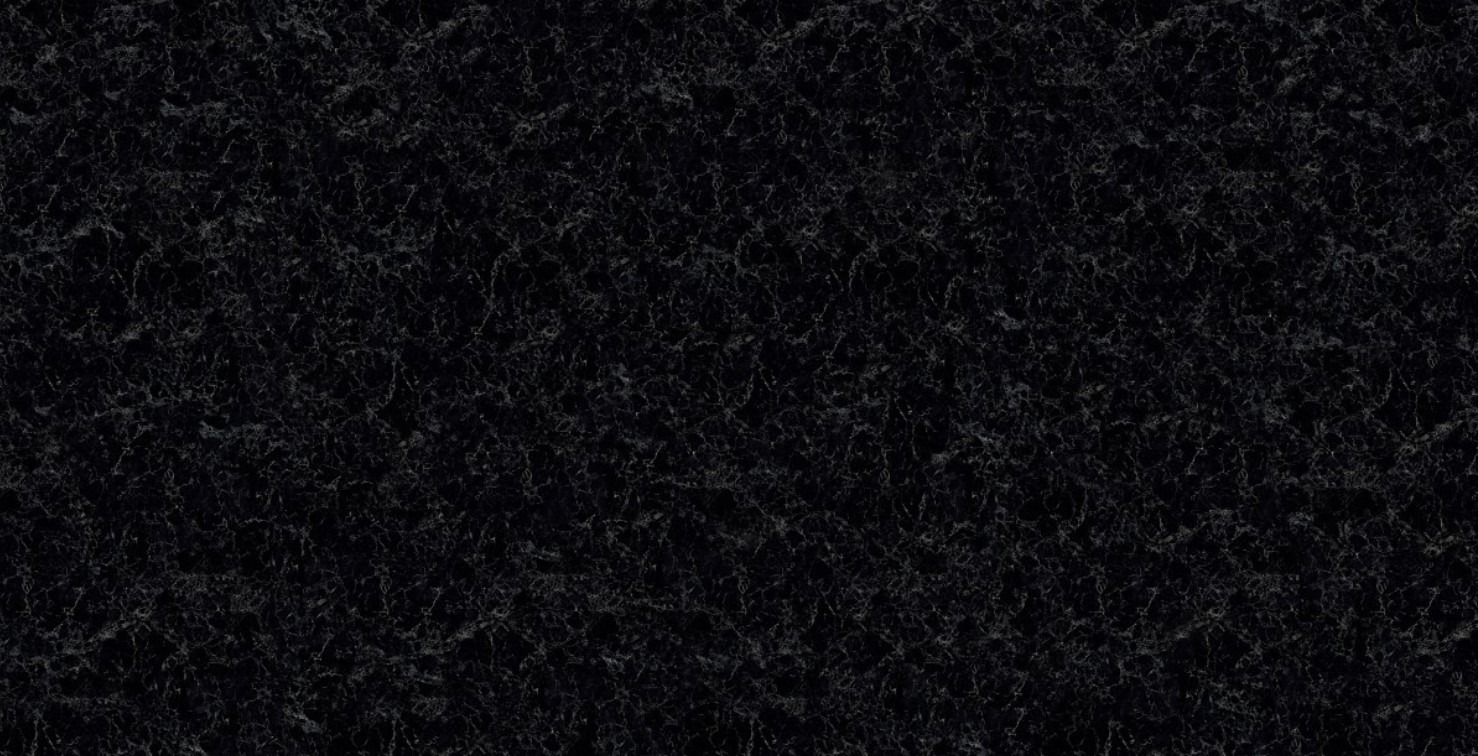
Vena Calacatta Infinita
This quartz option is an engineered stone and it’s a choice for homeowners that want an alternative to marble. It is non-porous and prevents the countertop from stains and is resistant to heat. The Vena Calacatta Infinita is a white canvas with gray veining. Almost intrinsic and artisanal to the rest of your space, this quartz option adds a new aesthetic to your kitchen or bathroom. It will accentuate best with the honed finish because it’s applications focus on its practicality.

Calacatta Nuvo
This is a quartz slab that has more of a beige coloration. Although the veins may be thin, the Calacatta Nuvo uses subtler notes rather than utilizing brightness or contrasts like the other options. This is a quartz material that works best with a polished finish. The benefit to this option is how well it works with homeowners that want a quartz countertop with more durability.
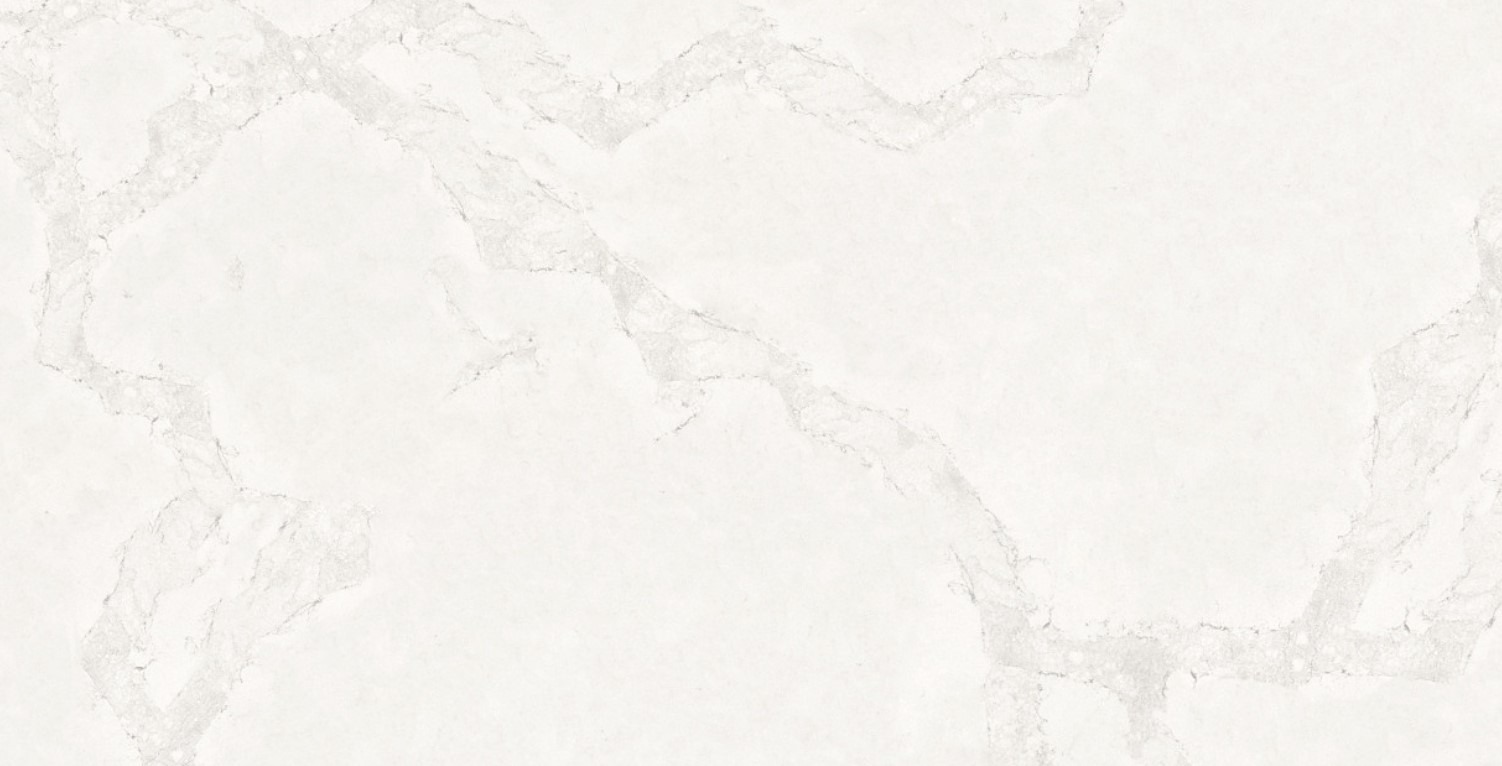
Vena Carrara
Quartz like the Vena Carrara is unique because it doesn’t have veining like the other options. This is a quartz color that is mostly a bright white, and will blend other light colors. It’s a quartz option that will work best with the polished finish due to its emphasis on its colors and the way it reflects off light. It is a practical choice that offers both appearance and functionality.
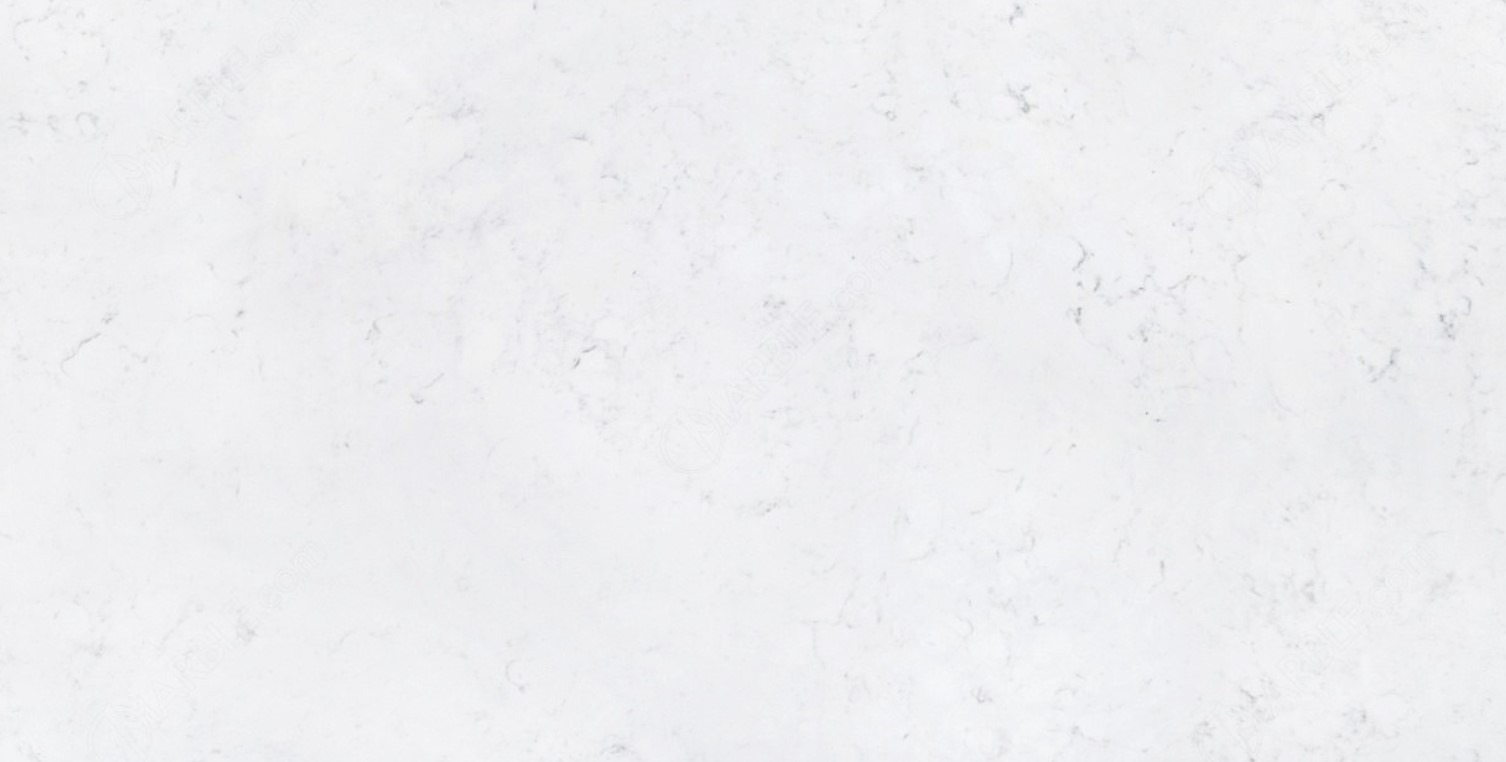
Statuario Nuvo
The Statuario Nuvo is a white quartz that is veined with light gray coloring. A peculiar characteristic of the Statuario Nuvo is that it looks somewhat beige. It mainly comes in a polished finish. Homeowners that want a white quartz but desire a little coloration to the material have this option available to them.

White Attica
Another white quartz option, the White Attica is a great choice for homeowners that love a darker veining. Although it may have a lighter tone to it, the White Attica retains a bolder appeal. It is very durable and very low when it comes to maintenance. The pattern of these veins also retain a peculiar, yet distinctive appearance.
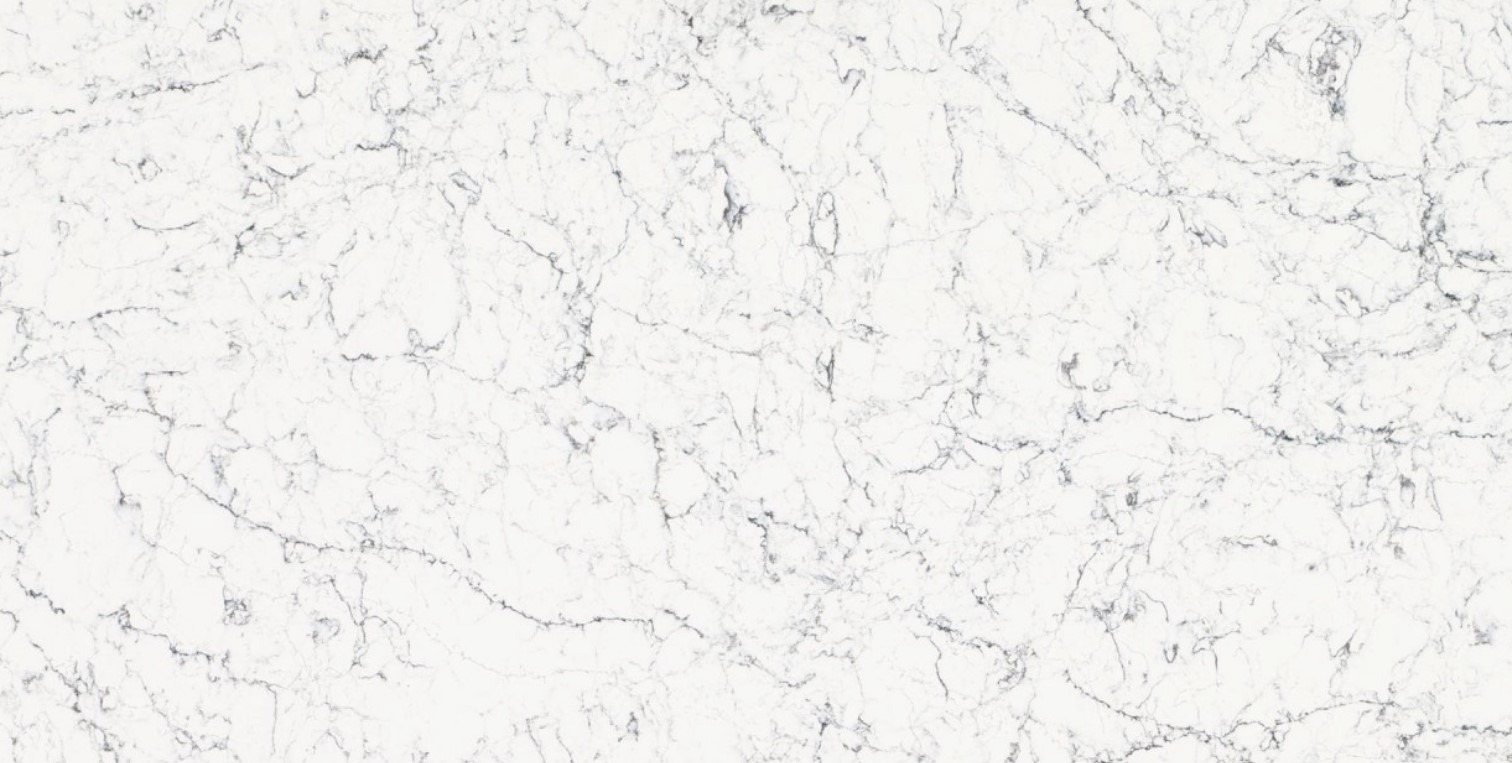
Excava
Probably an outlier out of this list, the Excava is a brown quartz with extraordinary veining and warm coloration. Homeowners will probably prefer a sueded finish since it is a color that boasts the appearance of the surfacing. If you’re looking for a countertop with a little more personality and want to avoid the monotony of white quartz, Excava might be the option for you.
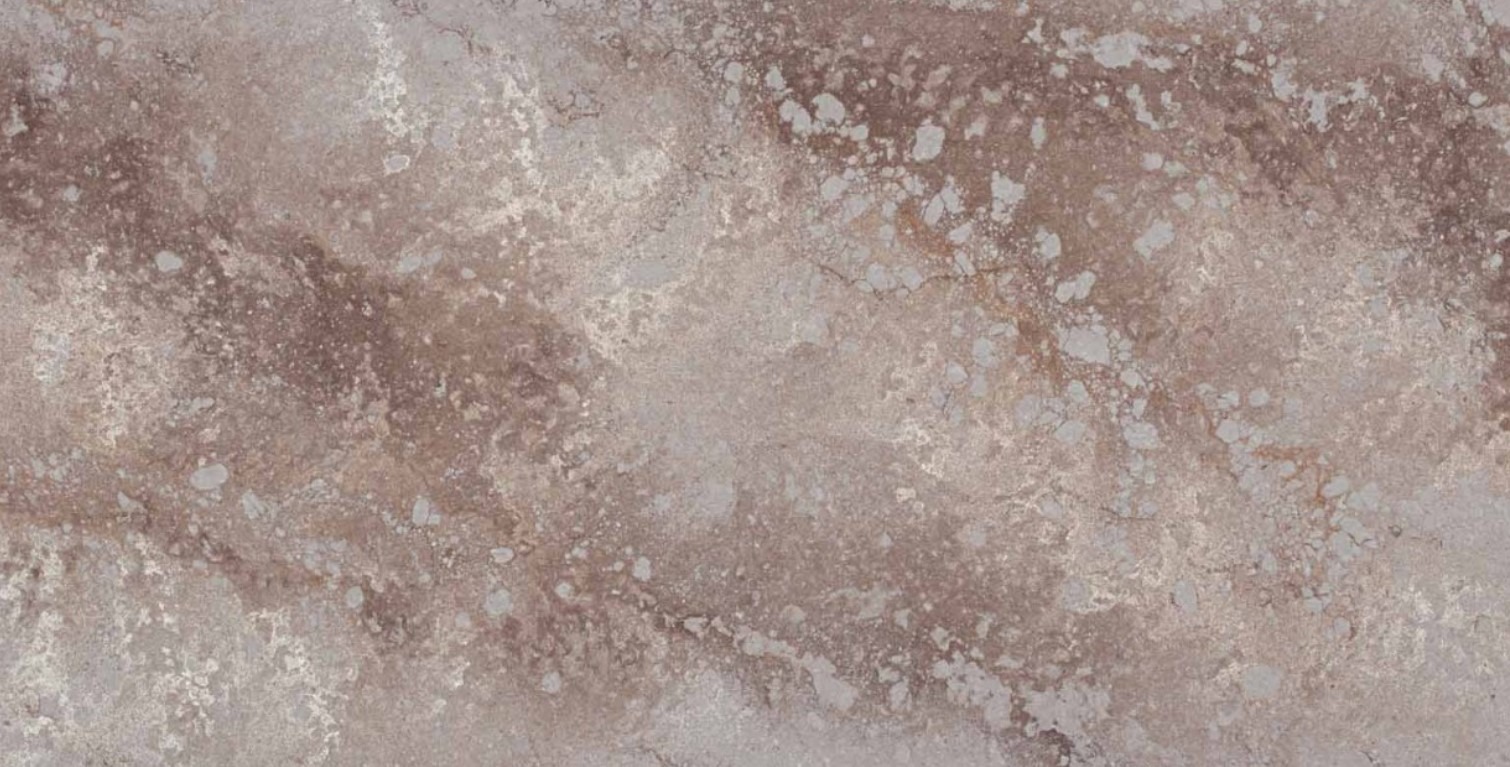
Caldera Caesarstone
Another brown color option, the Caldera Caesarstone is more of the darker alternative to Excava. If you’re looking for something exotic, your choice will probably vary between these two colors. Since most quartz is usually bright, you might want to look into the Caldera since it has light beige and brown veining.
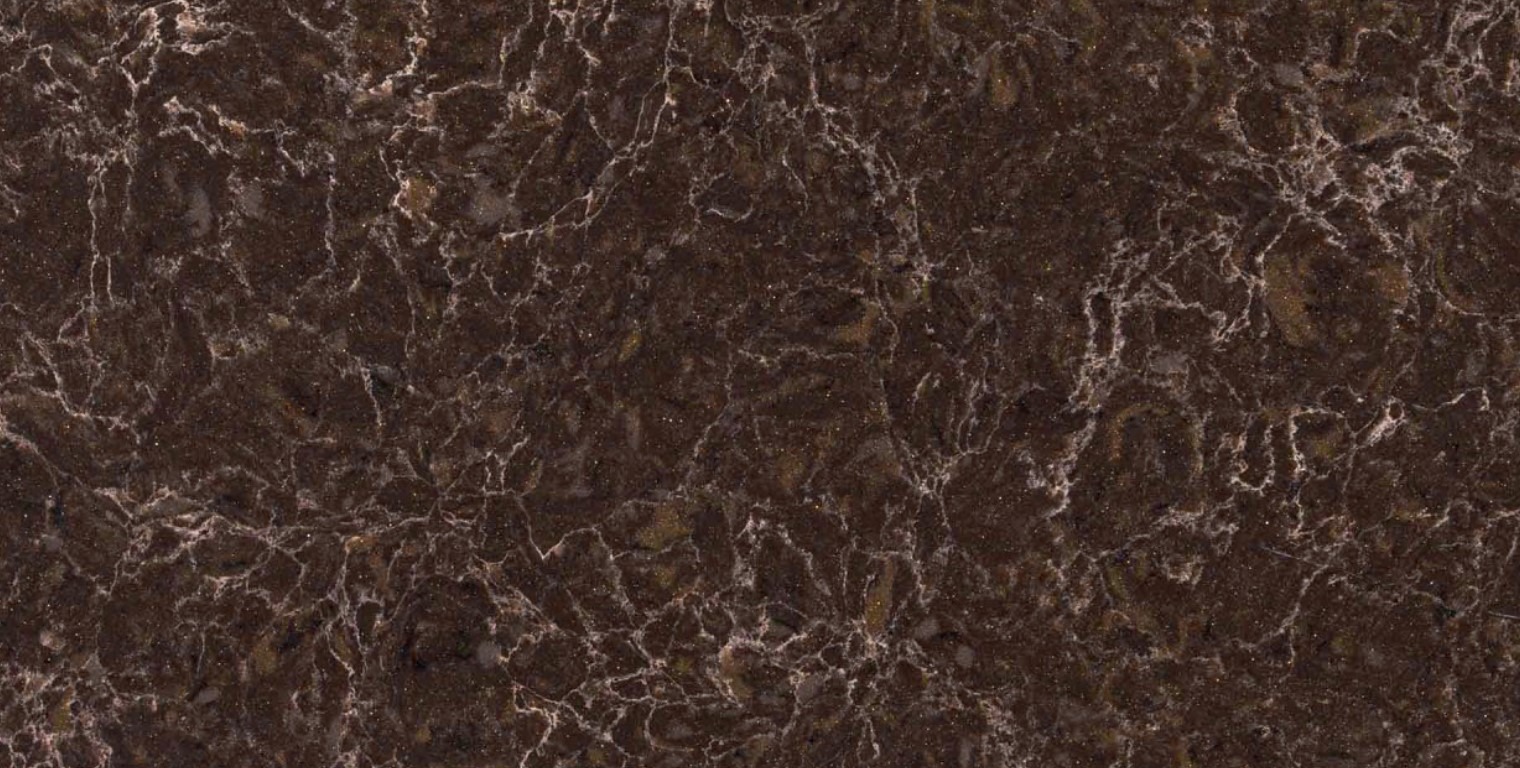
Bianco Drift
Made of white and gray coloration, the Bianco Drift is a quartz color that can be described as an off-white material. This kind of slab also retains non-porous qualities. Homeowners will opt for this quartz surface because it isn’t solely white and it has an unmatched depiction compared to the other white quartz colors. Homeowners that are looking for a bright but omitted pigment will want to look into purchasing and installing the Bianco Drift.

Cost Difference Between Kitchen & Bathroom
No matter which space you’re installing the quartz countertops, the cost won’t make much of a difference since the costs are associated with the space that the material is involved in. However, it is the additional cost of having to cut the space out for cooktops that will probably increase the price of installation in the cookery. Homeowners will likely have to pay about $3000 to $7500 overall in these cases, and the estimate could increase depending on the size of your kitchen.
Plumbing Rearrangement Costs
Ranging from $150 to $400, the services for reconnecting and disconnecting the lines and drains are required before any installations can even begin. The estimate varies since the price of the service is determined by whether the project is a complete remodel or just for the installation itself. Needless to say, these rearrangements will be needed for before and after the installation is finished.
Quartz Countertop Replacement Costs
Mentioned in the above sections, the cost of quartz is affected by the type of quartz you’re opting to purchase and install. Overall, homeowners should expect to spend about $50 to $200 per square foot. Essentially, you’re reinstalling the countertop so you should find that the costs will be reflected by the amount of work and supplies you’ll need for the installation process.
If you’re thinking about switching the material and installing a new stone for your countertops, you should carefully consider the costs that go into alternative installations. Depending on the kind of material you opt to install, there are benefits in finishing any project involving your natural stones. Whether you’re looking for a granite countertop, or a marble countertop, you can find out the estimated costs involved.
Finding Multiple Estimates Through House Tipster
There are many viable options for you to choose from when it comes to installing your countertop. And even if you’re considering one space over the other, the way that the homeowner must consider all their options and possibilities is by finding the right professionals in their area. Finding an affordable estimate can be done easily by using House Tipster.
Discovering the fabricator that best fits your needs can be quite the challenge, however, our web tool has two main functions that will help you. House Tipster lets you read and submit reviews depending on which professional you have requested services from or looking to request.
Our tool also has a chatting system to allow users to directly communicate with the professional about any estimates or questions they may have concerning the project you have in mind. Thanks to modern technology, you won’t have to worry about waiting hours and hours for someone to call you back. With our proprietary features, homeowners will be able to find exactly who they need for the project they’d been looking to complete. Give House Tipster a try and see your home’s potential come into fruition.




